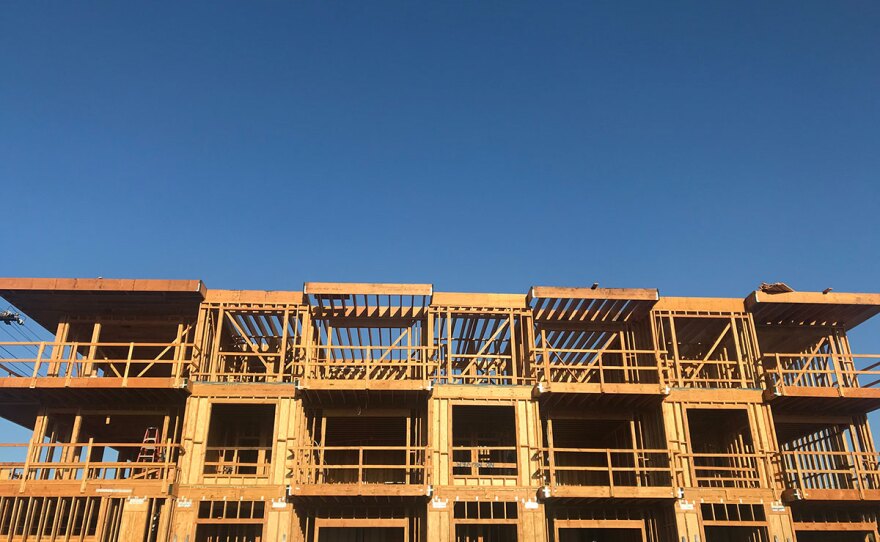State housing officials have given high marks to the San Diego Association of Governments for the planning agency's proposal to require more housing in communities with a lot of jobs and access to transit.
The California Department of Housing and Community Development sent SANDAG a letter last week praising its proposal for where to locate nearly 172,000 homes expected to be needed throughout San Diego County in the coming years.
Every eight years, SANDAG allocates a certain number of new housing units to each city in San Diego County, as well as the county's unincorporated areas. The process, known as the Regional Housing Needs Assessment, is designed to ensure communities are planning for enough homes to match projected population growth.
This year's proposal was hotly debated, with several cities in the county arguing that they were being forced to take on a disproportionate share of the county's growth.
Nonethless, the state housing agency applauded the plan. The Nov. 1 letter says SANDAG's housing methodology is in line with state requirements that it protect environmental resources and combat racial and economic segregation.
RELATED: Housing Crisis Shifts Conversation On Where New Homes Belong
"HCD appreciates the active role of SANDAG staff in providing data and input throughout the draft methodology development and review period, as well as developing a methodology that is clear and transparent," states the letter, which was signed by HCD Assistant Deputy Director for Fair Housing Megan Kirkeby.
SANDAG's proposal gives each community a score based on how many jobs and how many public transit stops it has. This is meant to discourage car-centric sprawl and instead promote infill development to shorten average commute distances and lower greenhouse gas emissions.
As a result, cities including Coronado, Del Mar, Solana Beach, Lemon Grove and Imperial Beach ended up with much higher housing allocations than in previous years. Officials from some of those cities fiercely opposed the methodology, saying the new expectations of denser zoning were unrealistic.
SANDAG also included an "equity adjustment" to require wealthier communities to plan for more low-income housing than in the past.
"We've described it as an equitable allocation where affordable housing is prioritized in places that currently don't have a lot of affordable housing," said Seth Litchney, SANDAG's senior planner overseeing the housing allocation process.
RELATED: San Diego Proposes Easing Church Parking Rules In Favor Of Housing
On Nov. 22, SANDAG's board of directors will be asked to officially adopt the methodology and present draft numbers for each jurisdiction in the county, Litchney said.
SANDAG's counterpart to the north and east, the Southern California Association of Governments (SCAG), was voted Thursday on its own draft methodology for allocating housing across its expansive region of Ventura, Los Angeles, San Bernardino, Orange, Riverside and Imperial Counties.
SCAG's interactions with state housing officials have been much more combative. In August the state overruled SCAG's request for a lower allocation, telling the agency it must plan for 1.3 million homes over the next decade.
SCAG initially proposed a methodology that would have pushed a large share of its housing into the Inland Empire, leading to criticism that it would lead to longer commutes and more pollution.
However, the agency's 86-member regional council Thursday adopted an alternative that promotes growth in the coastal regions where current demand for affordable homes is highest.







